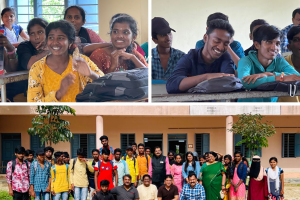Indian journalism and related thoughts on privacy, anonymity and data-driven stories.
When it comes to privacy, there are numerous boundaries that news organizations must ideally observe. Unfortunately, in India, the vast majority do not do that. There are a slew of factors responsible for this – the primary ones being failing business models, a lack of editorial control and indifference towards ethics across media outlets. We see this blatant disregard for privacy in television news all the time. There are several lines news channels should not cross when covering a story and it doesn’t take tremendous journalistic instincts to figure out where these lie. They involve simple guidelines such as respecting the privacy of assault victims, those who have been otherwise victimised or who specifically ask for privacy. But as a community, we largely ignore those boundaries. In some cases of rape, we may not reveal names but we still provide enough clues regarding the identitiies of the victims. So, we have still violated the privacy rule in spirit, if not by its formal definition.
Intense competition is one reason why issues of privacy are sidestepped in the industry. Television is a prime example of such a competitive landscape. At last count, there were 700 news channels across India of which no more than ten are profitable. That gives one a sense for the financial pressure faced by Indian media. It may not justify the behaviour but it does explain it.
There is no doubt that a journalistic code of ethics is vital for every news reporting organization. Again, this is something most Indian news organisations have not formalised. A handful do operate under a published code of ethics or an ombudsman. But such ethical guidelines or oversight are largely missing across the board.
Another important aspect of privacy in journalism involves protecting the anonymity of sources. Reliable sources are vital to journalism. When they provide information of a sensitive nature, they may also be subject to retaliatory action. Increasingly, governments everywhere are using the bogey of national interest to coerce or intimidate journalists into revealing their sources.
Identifying sources is something journalists should do in the rarest of rare cases – such as when an individual’s life or personal safety is under threat. National interest is not grounds for breaking this agreement. Once we start using that as a test, we will find ourselves on a slippery slope. It weakens our credibility with potential sources, making them less likely to open up in the future. It also compromises a big part of journalism’s role in a democracy – to serve as a watchdog that calls attention to the missteps of government. In this adversarial capacity, we have to be ready to face some pressure and even harassment.
The rise of populism globally has already impacted journalism’s ability to be truly adversarial. In places like Turkey, an increasingly dictatorial ruler has pre-emptively imprisoned close to 200 journalists who might have opposed his agenda. In a democracy, the pressure is more subtle but still real. The best way to resist it is for news outlets to present a united front against such coercion. Unfortunately, that is difficult to achieve in a fragmented and factionalised media landscape. And journalism in India, despite having expanded significantly in recent years, has also caved in the face of growing populism. In-depth investigation and coverage – of public schemes or of the inner functioning of governments or businesses – is hard to come by in this environment.
It is a truism of our time that we are living in an age of information or news overload. At the same time, our ability to distinguish between truth and falsehood is greatly diminished. The 24/7 avalanche of news – both real and fake – comes at us from different angles through the phones we can’t stop checking. We no longer have the time or inclination to focus on a story in order to assess its credibility or importance. It’s incumbent upon journalism and journalists to address this issue. This is where data can come into play. For example, we can run the statements of government leaders, politicians and other public figures through regular fact checks. In the process, we are likely to find that many of them routinely exaggerate, misrepresent or distort these facts.
The problem with reportage is that it forces us to occupy some position on the ideological spectrum. But data enables us to place people, events and trends in perspective without resorting to subjective analysis. To the extent that we can strip out opinion and provide just the facts, it allows people to arrive at their own considered conclusions. Such data-driven storytelling will be important if journalism has to push back against the onslaught of alternative news and boost its relevance.
Samar Halarnkar is Editor of IndiaSpend.com, a public interest journalism website.



